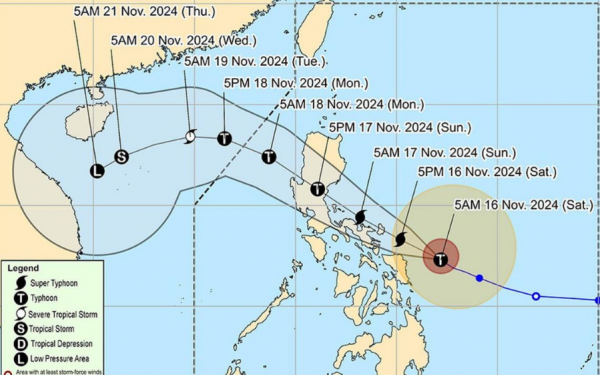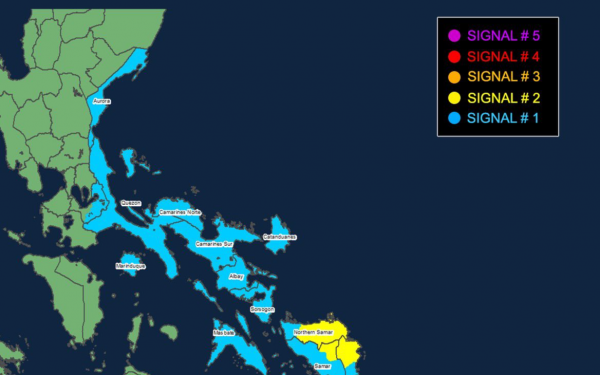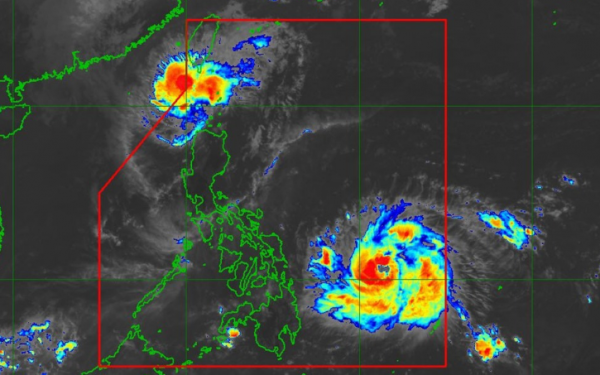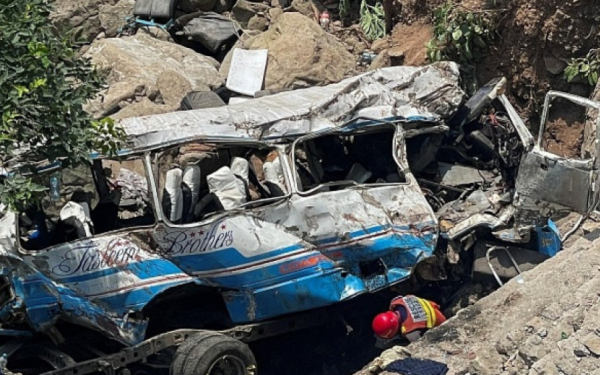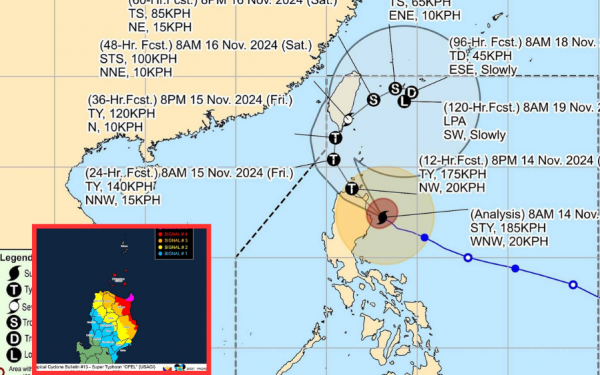NASA: Philippines’ overlapping cyclones ‘unusual’
 At 8:55 a.m. on November 11, NASA’s EPIC (Earth Polychromatic Imaging Camera) imager on the DSCOVR (Deep Space Climate Observatory) satellite observed 4 cyclones that were either approaching the Philippines or had already passed over the the country. NASA
At 8:55 a.m. on November 11, NASA’s EPIC (Earth Polychromatic Imaging Camera) imager on the DSCOVR (Deep Space Climate Observatory) satellite observed 4 cyclones that were either approaching the Philippines or had already passed over the the country. NASA
The string of storms that simultaneously swirled near the Philippines this November was “unusual”, NASA said.
NASA on Thursday shared a satellite image that showed tropical cyclones Marce, Nika, Ofel, and Pepito lining up in the western Pacific on Nov. 11.
At that time, the cyclones were either approaching the Philippines or had already passed over Luzon.
“In an unusual sight, four storms churned simultaneously in the Western Pacific Ocean in November 2024," NASA said.
"The Japan Meteorological Agency reported that it was the first time since records began in 1951 that so many storms co-existed in the Pacific basin in November,” it added.
Typhoon season in the West Pacific stretches across the entire year, but most storms form between May and October, NASA noted.
“November typically sees three named storms, with one becoming a super typhoon, based on the 1991-2000 average,” it added.
The Philippines’ brutal wave of weather disasters has already killed 159 people and prompted the United Nations to request $32.9 million in aid for the worst-affected regions.
Marce hit northern Luzon on November 7.
Four days later, Nika slammed into Aurora province, where it unleashed flooding and brought power outages. It also spawned landslides that buried roads in the Cordilleras.
Ofel on Thursday slammed into the Philippines' already disaster-ravaged north, prompting thousands to evacuate.
Meanwhile, Pepito will continuously intensify and reach super typhoon strength by Saturday. It may make landfall at peak intensity over eastern Bicol or Central Luzon this weekend, PAGASA said.
This was similar to the path of last month's Severe Tropical Storm Kristine, which accounted for most of the deaths tallied in the recent swarm of weather disasters to hit the country.
"Typhoons are overlapping. As soon as communities attempt to recover from the shock, the next tropical storm is already hitting them again," said Gustavo Gonzalez, the UN's humanitarian coordinator in the Philippines.
"In this context, the response capacity gets exhausted and budgets depleted."
A UN assessment of the past month's weather disasters said 207,000 houses had been damaged or destroyed, and nearly 700,000 people were seeking temporary shelter.
Many families were without even essentials like sleeping mats, hygiene kits, and cooking supplies, and had limited access to safe drinking water, it said.
The storms destroyed thousands of hectares of farmland and persistent flooding is likely to delay replanting efforts and worsen food supply problems, the report added.
About 20 big storms and typhoons hit the archipelago nation or its surrounding waters each year, killing scores of people and keeping millions in enduring poverty.
A recent study showed that storms in the Asia-Pacific region are increasingly forming closer to coastlines, intensifying more rapidly and lasting longer over land due to climate change.

